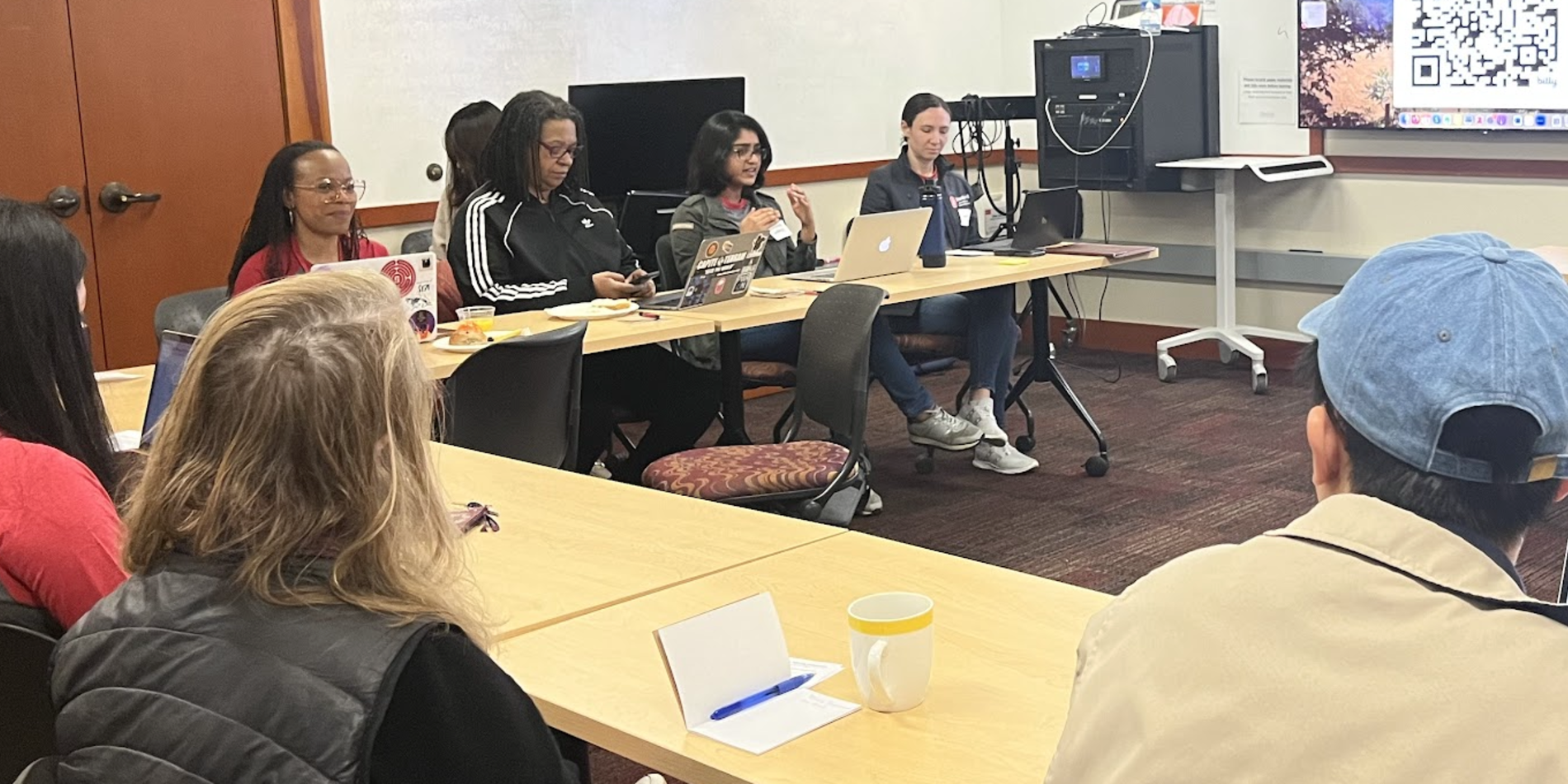Writing Specialist Confidential: Donna Hunter, History Department
Being the Writing Specialist in the Economics department in 2013-14 was challenging, not just because I was reading Greek, but because, as you might imagine, problem sets are the foundation of Stanford’s undergraduate Economics department rather than essay assignments. Being the History department’s Writing Specialist means, by contrast, partaking in an embarrassment of riches for a person with a Humanities background. Writing is the discipline’s bread and butter. Even in lecture courses where students have to opt in to writing a research essay, reading responses and mid-terms and finals require writing. And the small class sizes in the department’s Writing in the Major courses typically mean that student writing is being talked about and read closely by a professor, a graduate writing fellow, and peers.
What then, is the Writing Specialist’s role in this seemingly crowded, content-heavy space? Collaboration.
************
The buzz of nervousness and expectancy was almost as palpable as the snacks and roll calling. For some, it was the first day of their first college class. For everyone, it was day one of Professor Joel Beinin’s frosh intro seminar: “The American Empire in the Middle East.”
I was feeling those first day jitters, too, since it was my first workshop in History and I was there not just to introduce myself and my services as the History Writing Specialist, but to lay the groundwork that would help students ask key historical questions to analyze, orally and in writing, why one author’s argument was more sound than another’s. These skills would be key in this intro sem, but also in every history course they took at Stanford.
To prepare for the workshop, Professor Beinin and I emailed one another to discuss what he wanted the students to practice that day, I found the editorials based on the course’s theme and timeframe, we went back and forth about workshop activities, I sent drafts, and then we and the undergrad TA all met to discuss how to make it all work. That meant that I knew what Professor Beinen was hoping to accomplish during the workshop, I was presented as a key course player, and I had a chance to witness Beinin’s masterful teaching as well as discern the kind of analysis he valued. Each of these components helped me better assist his students with their writing all quarter, learn much more about US policies in the Middle East, and improve my own strategies for teaching about who chooses what evidence, why, and how that affects a text’s argument.
All of this is to say that for me, working intimately with the professor and TA from the beginning of the quarter is what made this workshop and my work as a writing consultant so successful all quarter.
Similarly, I partnered with Rachel Midura and Professor Giovanna Ceserani to lead a research question workshop for the first iteration of their course, “Mapping the Grand Tour: Digital Methods for Historical Data.” Talking with Rachel enabled me to modify one of Sarah Pittock’s excellent handouts to help students choose and narrow research questions and methodologies specific to digital history, where data points, visuals and writing meet. This collaboration between myself and Rachel then expanded to the students, who shared their potential research topics in a Google doc they read from or summarized as the class began. Surprisingly, not that many History instructors use Google docs in class, so I was able to introduce them to this teaching tool, while I learned from them about the digital mapping of history. Who knew you could graph the educational histories of architects who visited 18th century Italian cities and learn what that reveals about travel history? More immediately, using the Google doc quickly invited me into the students’ interests and the students into one another’s. Since one of the course goals was having students’ projects become a part of The Grand Tour Project, articulating their ideas to an audience using a variety of modes was important.
Finally, I was fortunate enough to be a part of Professor Burn’s courses every quarter. Spring’s collaboration was in some ways the most interesting, because I was working alongside two current and one former graduate student TAs in her large lecture course, “The United States in the Twentieth Century” team. The title reveals that it covers a massive amount of content, while its number, 50/150c, signals that it serves two sets of students: those who have decided to take it for five units and will therefore write a research paper and attend two to three “writing workshops” in addition to going to “story hour” (aka lectures), discussion sections, archives and taking a midterm and final. Professor Burns and her TAs have designed very effective section activities that teach all students how to analyze historical writings and visuals for the author’s rhetorical choices and arguments, as well as thought deeply about and continue to revise the writing workshops designed for research paper writers. Being part of the writing workshop team, I learned about using local historical archives from Paul Nauert (ask him about his work on chrysanthemum growers in California) and broadly what “kinds” of historical arguments might be made using primary documents, especially by students skeptical about what “truths” they could reveal. While most students relied on their brilliant TAs for one-on-one work, I was able to help small groups of students think about narrowing the scope of their projects.
Overall, I found that collaborating with professors and graduate students meant I was able to share some of the expertise I’ve cultivated as a PWR instructor. But even more exciting was learning history; thinking deeply about what, for example, makes a strong introduction in a variety of genres; and participating in new writing strategies I could adapt to my own courses, such as focusing on the precise ways a student is using evidence to support their argument.



